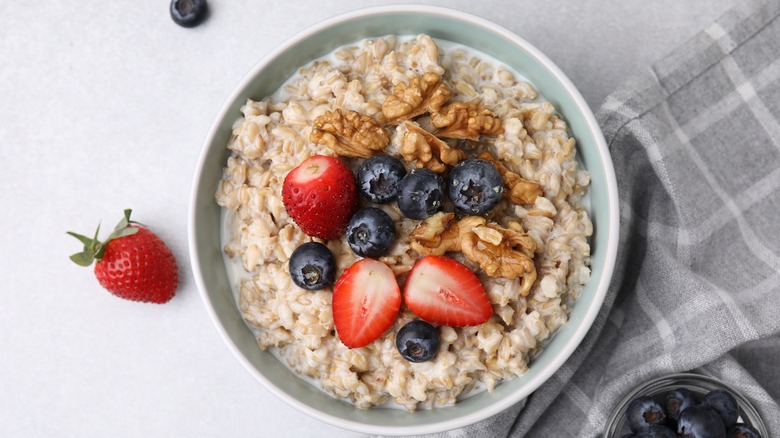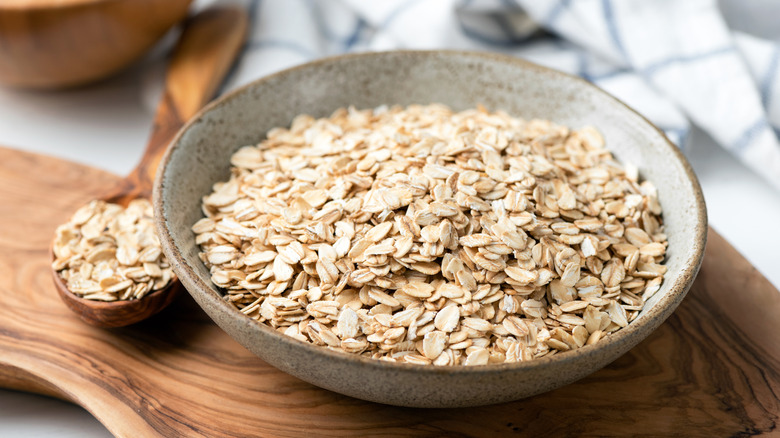When's The Best Time To Add Salt When Cooking Oatmeal?
Despite its convenience, oatmeal is often dismissed as overly bland — but it doesn't have to stay that way. The secret to flavorful oatmeal could simply depend on if and when you're salting your dish.To learn how to salt oatmeal for maximum flavor, Food Republic spoke with Marissa Stevens, the recipe developer and food blogger at Pinch and Swirl – where she creates unique recipes such as Meatloaf with Oatmeal. According to Stevens, the best time to add salt to oatmeal is at the beginning. "When you add salt with your liquid and oats from the start, it has time to dissolve and distribute throughout," she shared.
Stevens clarified that adding salt won't turn your morning oats into a savory dish. "Salt isn't just about making oatmeal taste salty — it actually brings out the nutty flavor of the oats themselves," the expert said. Much like when you toasting your homemade oatmeal to deepen the flavor, salt can add layers of flavor that will otherwise go underdeveloped.
Happen to forget the salt at the beginning? Put down the salt shaker — Stevens warned against covering your tracks later on. "If you wait until the end to add salt, you end up with uneven seasoning and need to use more salt to get the same effect. And sometimes you taste little salty pockets. Not great," she explained. "I once forgot the salt until the very end, and no matter how much I added, it just tasted ... off."
More tips for salting your oatmeal
When adding salt to your oatmeal, first consider what kind of oats you're using, as there's a distinct difference between rolled and steel cut oats. According to Marissa Stevens, "Steel-cut oats need more salt than rolled oats — they're heartier with more intact bran. For a cup of steel-cut, I use about ½ teaspoon of salt. For the same amount of rolled oats, I go with ¼ teaspoon." If you're using instant oats, be extra careful how much salt you add in — more than a pinch can make your breakfast overwhelmingly salty.
It's not just the heartiness of oats that affects their salt absorption — it's also the cooking time. "The longer cooking time for steel-cut gives the salt more time to do its thing," Stevens said. "With quick oats, you've got to be careful — they can flip from bland to over-salted really quickly. I've ruined more than one pot [by] being heavy-handed with the salt shaker." As for the type of salt you use, choose one that dissolves easily, such as kosher or sea salt. Unless you're making savory oatmeal with hard-boiled egg slices, avoid flaky salt to prevent pockets of intense saltiness, or smoked salt to avoid clashing flavor profiles.


